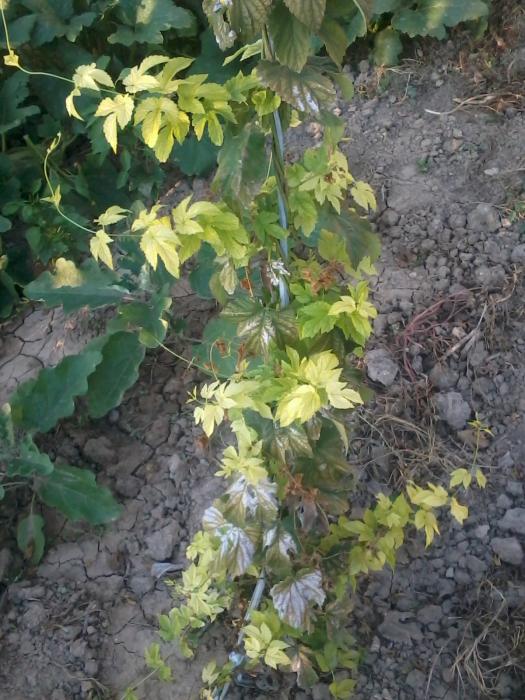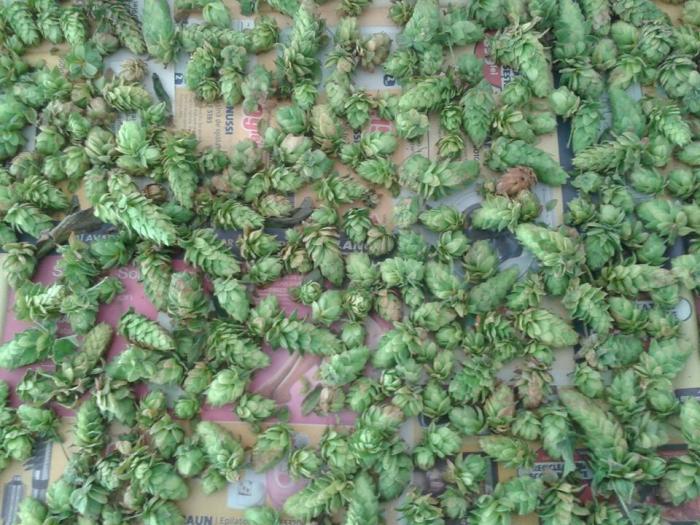bionut
Well-Known Member
Hello guys!
I hope you can help me find out what disease are my hop plants suffering from.
I have a Northern Brewer that has grown only about 2.5 meters(you can see it in the attached pictures), and a Saaz and a Hallertauer that i have trimmed down because they wouldn't grow bigger than ~1 meter (now i'm sorry i didn't took pictures before cuting them down, to be sure that they had the same problem...).
I have also one Cascade that has grown bigger than the trelis (picture attached), with no sign of disease, despite that all the plants ar relatively close to each other.
Keep in mind that all 4 plant are in their first year (planted in september from store bought little plants).





I hope you can help me find out what disease are my hop plants suffering from.
I have a Northern Brewer that has grown only about 2.5 meters(you can see it in the attached pictures), and a Saaz and a Hallertauer that i have trimmed down because they wouldn't grow bigger than ~1 meter (now i'm sorry i didn't took pictures before cuting them down, to be sure that they had the same problem...).
I have also one Cascade that has grown bigger than the trelis (picture attached), with no sign of disease, despite that all the plants ar relatively close to each other.
Keep in mind that all 4 plant are in their first year (planted in september from store bought little plants).









